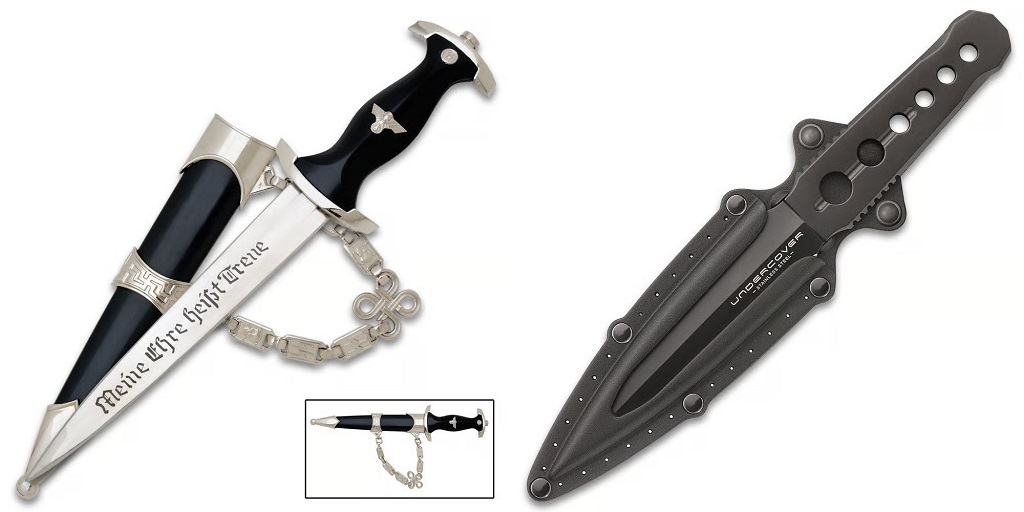Many daggers are highly specialized weapons, as in the case of the stiletto, which is designed for penetration, even for splitting mail rings, or in the case of the main gauche, for parring a larger blade.
Others are highly ornate, such as the Japanese tantos that are sometimes elaborately decorated with lacquered sheaths and rayskin wrapped tsukas (hilts).
It is obvious that daggers can be effective weapons. But are there any profiles that can be effective as tools, either around the workshop, or in the field?
Really, it comes down to profile and application. Let’s take a closer look.
Practical Uses for a Dagger
With respect to the use of a dagger as a tool, there are some attributes that are either not necessary or which can actually counteract utility.
Two of these are a crossguard and a double-edge. While the double edge is not a liability necessarily, it does make it impossible for you to use the dagger in a saber grip with your thumb on the spine – since the spine will be sharpened.
The main purpose of a crossguard is to protect a user’s hands from an opponent’s blade; therefore, here it is not a value added attribute.
Even so, some dagger profiles, such as the small tantos (which are occasionally called kaiken or obi) or sgian dubh knives, even dirks, can be highly effective for general utility. Another practical pattern is the sax or seax, a rather large dagger that also usually has one edge.
There are also numerous applications for which these sorts of bladed tools can be effective. They can be used for food prep – even though they might be a little overkill for that application – as well as for camp chores like whittling or carving camp furniture.
The larger sizes of some patterns also makes them good as choppers and camp knives. In this respect, the second edge may be a benefit and not a liability. One edge can be kept very fine and sharp for detail work, whereas the other can be kept with a coarser grind for chopping and rough work.
Another potential use for a dagger, at least one of a suitable pattern, would be for use as a hunting knife. Some smaller models can be highly effective at breaking down and cleaning game. Granted, there are always going to be better knives for the application, but that doesn’t make a dagger utterly unsuitable.
At the end of the day, this isn’t really about going out and buying a dagger to serve as a camp knife or a skinner. It’s about answering a basic question: if I already have one of these things, is there a basic utilitarian application?
And the answer is, basically yes. Any port in a storm, as they say.
Now, if your intention was expressly to go and get a dagger to use for that sort of thing, it would be advisable to get one with a single edge, without a crossguard, and without any ornate or elaborate features that would make it somewhat less than practical for the application at hand.
Where to Get a High-Quality, Historically Attestable Dagger for Practical Purposes
Whether you’re looking for a dagger to round out your collection (or perhaps carry as a camp knife) or are just looking for a basic yet quality knife for one of the applications or disciplines mentioned here, the place to start your search is BudK.
They carry a wide range of daggers, swords, and fixed and folding knives, as well as automatic knives, with some really unique designs in the mix. Check out their website first to see what they have in stock, then get in touch with them if you have any questions.
For more information about Sword Cane and Ninja Stars Please visit: BudK Worldwide Inc.
